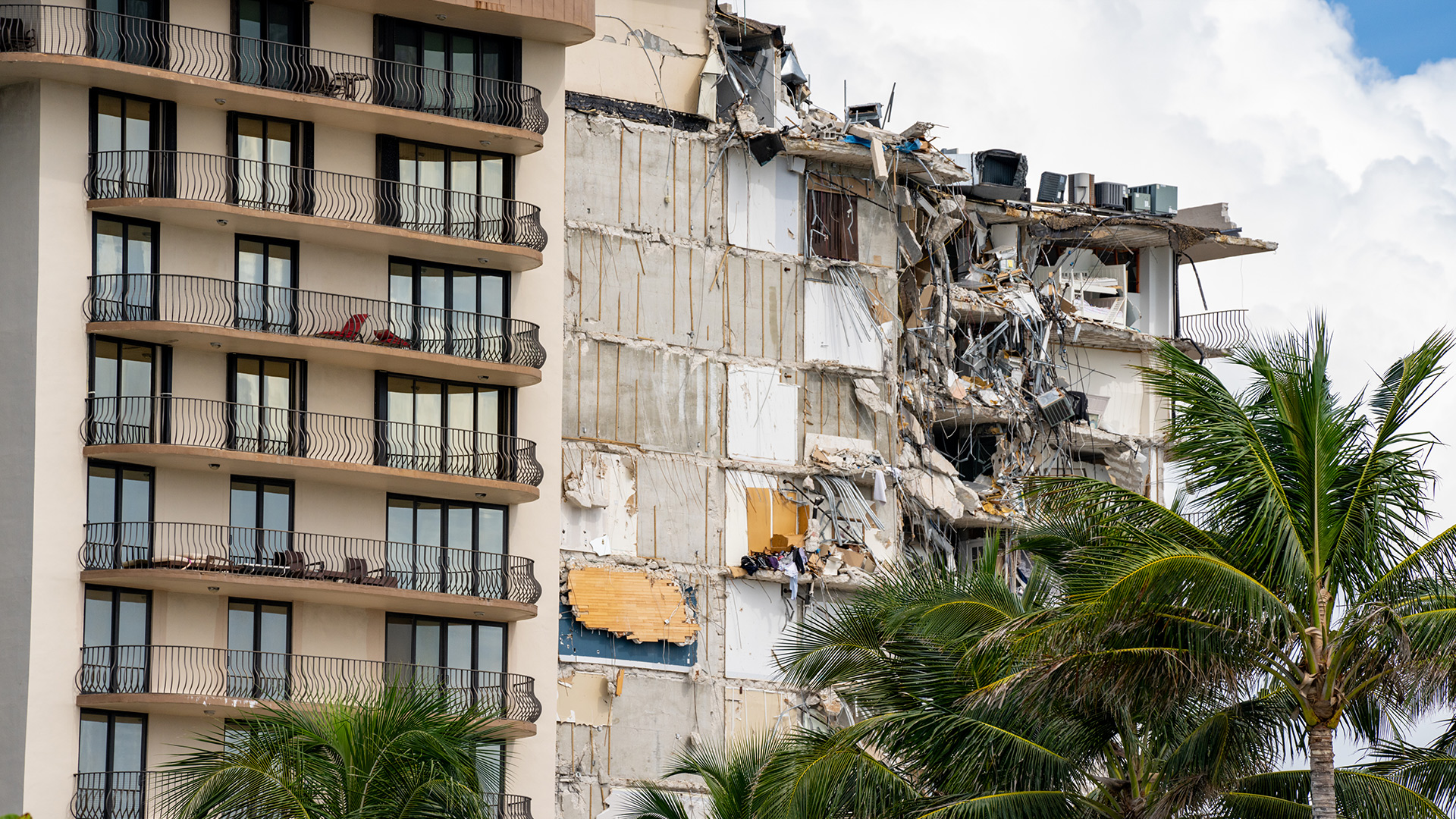
“I’m self-styled as a building pathologist, because I had to come up with a title that was appropriate to what I was doing,” says Mike Parrett FRICS. “Now, strangely, there are a lot of building pathologists out there.”
Parrett is unquestionably one of the pioneers in his field. For more than four decades he has been fixated by the causes of building failure. A long career diagnosing damp has taken him from the housing estates of south London to some of the world’s most famous historic buildings, encompassing several books, including Building Defects and Your Health. He’s also featured in a television exposé on the damp-proofing industry, a DVD series, and, in 2014, was awarded an eminent fellowship by the RICS.
Parrett uses a medical analogy to explain why building pathology is needed: a man goes to the doctor with a pain between his shoulder blades. The doctor does a basic survey of his condition, using his stethoscope, taking his blood pressure and a urine sample, then says: “Mike, I'm really not sure whether that's musculoskeletal, or fluid, perhaps pleurisy. So, I'm going to refer you to AstraZeneca for the next stage of your medical examination.”
Parrett asks: “Would you be happy with that? Of course not. What building surveyors are very good at is identifying the symptoms, but not the underlying cause and source of the problem. Where their survey stops, mine starts.” However, as things stand, in the vast majority of cases, the surveyor, having identified damp as a problem, refers the property owner to a commercial damp proofing company, he says.
That firm is then employed to not only give a supposedly detailed diagnosis of the problem, but also to suggest a course of action, and carry out their own recommendations. That, argues Parrett, constitutes a clear conflict of interest, and leads to the misdiagnosis of problems with damp and mould, leading to unnecessary expenditure, and continued misery for residents.
Parrett’s views were formed during his early career managing social housing repairs and maintenance in south London. During the course of his work for the London borough of Southwark, which began in 1977, and later at Lewisham, it soon became clear that the most frequent causes for tenant complaints were damp and mould. And in many cases those conditions were proving detrimental to tenants’ health, exacerbating respiratory problems like asthma, and leaving them increasingly vulnerable to bronchitis, coughs and colds.
During a period when public housing budgets were relatively generous, the common practice was to bring in a contractor that would carry out a course of chemical damp-proof injections, and retrofit waterproof plaster. However, problems often recurred after the work had been carried out, and Parrett became convinced that the true causes of damp, totally unrelated to the failure of a physical damp-proof course, were being ignored.
He was given an opportunity to put his theories into practice at Lewisham, where he set up a team dedicated to tackling damp in the borough’s 34,000 council homes. The council halted the use of chemical damp proof courses, a policy that Parrett believes saved millions of pounds, freeing up resources to carry out more effective actions.
Since then, Parrett has become a crusader against the prevailing practices in the commercial damp-proofing industry. “In 40 years of operating as a serious consultant worldwide, I've never ever recommended a chemical damp proof course injection to solve dampness problems in any property, either ancient or modern,” he says. It is a stance that has sometimes proved controversial. He was closely involved with an episode of the 1999 Raising the Roof BBC TV documentary series, which claimed to dispel myths around rising damp, and provoked furious rebuttals from housebuilders and damp-proofing firms.
When asked about his approach to preventing and fixing damp, Parrett quotes two principles espoused by Victorian artist and architectural conservationist William Morris: “stave off decay with daily care,” and the need for buildings to “breathe.” He observes that while he has never encountered an example of a failed damp-proof course, there are myriad other contributing factors to damp and mould, including defective guttering, blocked cavity wall voids, leaking water mains, faulty plumbing, and blocked air vents. Underheating of properties by residents is another factor, and a “growing national problem” that is only likely to worsen with soaring energy prices pushing more people into fuel poverty.
Climate change is exacerbating problems, particularly in older buildings, which were built without damp-proofing measures, he says. “There are Georgian properties where the same family that has been in occupation for generations, suddenly starts finding damp. That is because climate change has raised the water table.”
The rising water level was the causative factor in one of Parrett’s most high-profile cases, Saint Mark’s Basilica in Venice, where saltwater ingress was damaging masonry in the 11th century cathedral’s crypt. He joined a UNESCO team, collaborating with Italian academics, to address the issue, which was eventually resolved by the injection of a specially developed acrylic paste into the mortar. Usually, modern fixes cannot be applied to historic structure because of the damage they cause to the building fabric, he says. Solutions are often more about management than cure, and must ideally be reversible, so that the historic architecture behind them remains intact.
Retrofitting aimed at increasing energy efficiency, while “eminently sensible,” is creating further complications, says Parrett. “The retrofit agenda is not being thought through. There are consequences to wrapping an old building that should be allowed to breathe. What we're doing in a lot of cases, is trapping the moisture in as well as the heat, so we're creating warm, humid homes rather than warm, dry homes. There is a balance to be struck, because we have to intervene in a way that doesn’t undermine the functioning of the building.”
Insulation would sometimes be more effective if applied to the inside of walls, rather than their exterior elevation, but policy makers baulk at the cost, he adds. Instead, cavity walls are filled with insulation that is sometimes highly absorbent, or inappropriate external cladding is added that creates its own problems, most notably and tragically in the case of the Grenfell Tower blaze. The lessons gleaned by multiple professions and specialisms from disasters like Grenfell and the Champlain Towers collapse in Florida should be brought under a “building pathology umbrella” and woven into BIM models to inform future design, maintenance and retrofitting, he counsels.
Building failure is not confined to ageing structures, however. Issues related to poor design and construction in new buildings are “endemic around the globe”, claims Parrett. Too often, engineers, architects and contractors are content to duck responsibility for obvious and easily avoidable flaws, instead of having intelligent conversations about how buildings should be designed, altered and refurbished, he argues.
The solution, he concludes, is for the surveying industry to emulate the medical profession by training its own pathology experts, rather than relying on commercial diagnoses, and to integrate that knowledge into multi-disciplinary teams. “By understanding pathological principles in how to investigate buildings, and developing a new era of satellite specialists, we can not only involve those people in the process to design issues out, but also create a group of people who can go in and do a proper independent investigation when buildings fail.”

“There are consequences to wrapping an old building that should be allowed to breathe” Mike Parrett FRICS, consultant building pathologist


